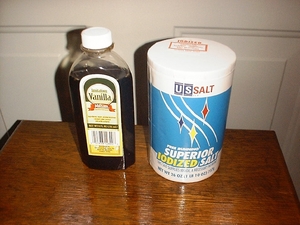If you want an easy to grow tree, with virtually no problems of pests, then the magnolia is sure to please. There are two types of magnolias; evergreen and deciduous. Transplanting times vary depending on the variety you have. Evergreen magnolias are best transplanted in the early spring, but if you have a deciduous magnolia tree, then wait until autumn if you live in the southern zones or early spring if you live in the northern zones.
According to the website,The United States National Arboretum: Magnolia Questions and Answers, bees or butterflies do not pollinate most magnolia trees. Instead, beetles pollinate them. Therefore, if you notice beetles on your tree, they do not pose any problems, they actually have a purpose.
The Right Location
Once you decide on which magnolia tree you want to plant, you will need to pick out the right location. Find an area that is sunny, but has partial shade during the hot afternoon hours. Also, you will want to make sure there is enough room for this tree to grow. Depending on the variety chosen, they can grow from heights of 15 feet or soar up to 80 feet. There is nothing worse than planting a big tree in a small area, or right up close to your house. They are much harder to move after they have grown. If you are planting a tree that you grew from seed, transplant it in the yard after it has grown in a pot for one year.
Dig or till the soil in a 4-foot circle. Amend the soil with 3 to 4-inches of well-rotted organic compost and work this into the ground. If you find any sticks, rocks or other hard debris, be sure to remove them. Level the soil with the back of your rake to make it nice and even.
With your spade or shovel, dig a hole that is twice as wide and twice as deep as the magnolia’s rootball. Backfill the hole with soil until it is a little over half full. Remove the rootball from the container, being careful not to break the soil. If the pot is hard to remove, cut it away using a utility knife, but don’t cut too deep that you damage the roots. Inspect the rootball. If the roots are visible, gently tease them away from around the outside. If they are left growing this way, they will choke your tree to death.
Planting the Tree
Center the rootball in the hole. Check to make sure the top of the rootball is 1/4 to 12-inch above the surrounding soil. As the soil beneath your tree settles, it will become level with the ground.
Fill in around the rootball with soil, tamping the soil firmly but lightly as you go to remove air pockets.
Watering
Water the magnolia tree thoroughly. Keep the soil evenly moist by watering once or twice a week. If the summer is hot and dry, water more frequently. A soaker hose works best, but if you don’t have one, hook up an ordinary hose. Turn the water flow to low and allow the water to run for several hours to ensure the moisture goes deep into the soil.
Mulch
Place 2 to 3-inch layer of organic mulch over the soil. Keep the mulch 1.5 to 2-inches away from the bark of the magnolia tree. Mulch helps the soil to retain moisture and prevents weeds from growing.
Fertilizing
Feed your magnolia in the early spring after it is one year old. Use a fertilizer recommended for growing magnolia trees or acid-loving plants. Read and follow label directions for proper application. If you choose manure, or bone meal, rake the mulch off the ground and then apply according to directions. When you finish fertilizing, replace the mulch over the soil.
Pruning
Prune away dead or diseased branches. If you must prune other parts of the magnolia, do so after it has finished flowering.
Sources:
“American Horticultural Society A to Z Encyclopedia of Garden Plants”; Christopher Brickell; 2004
“Growing Trees from Seed”; Henry Kock; 2008
The United States National Arboretum: Magnolia Questions and Answers


